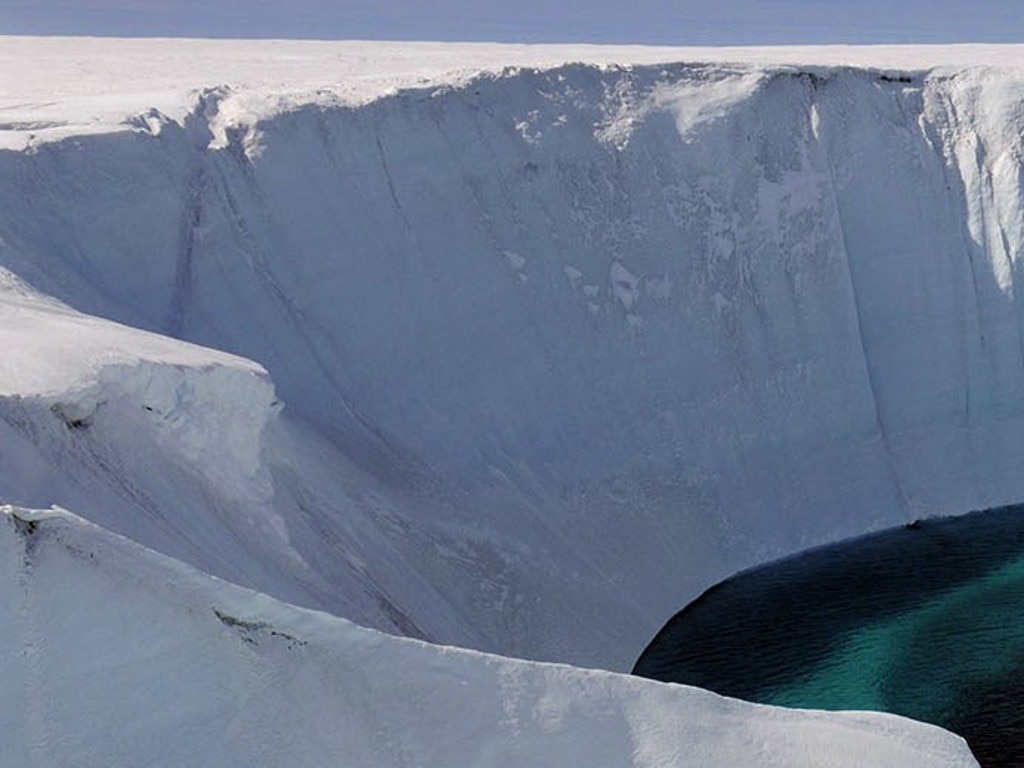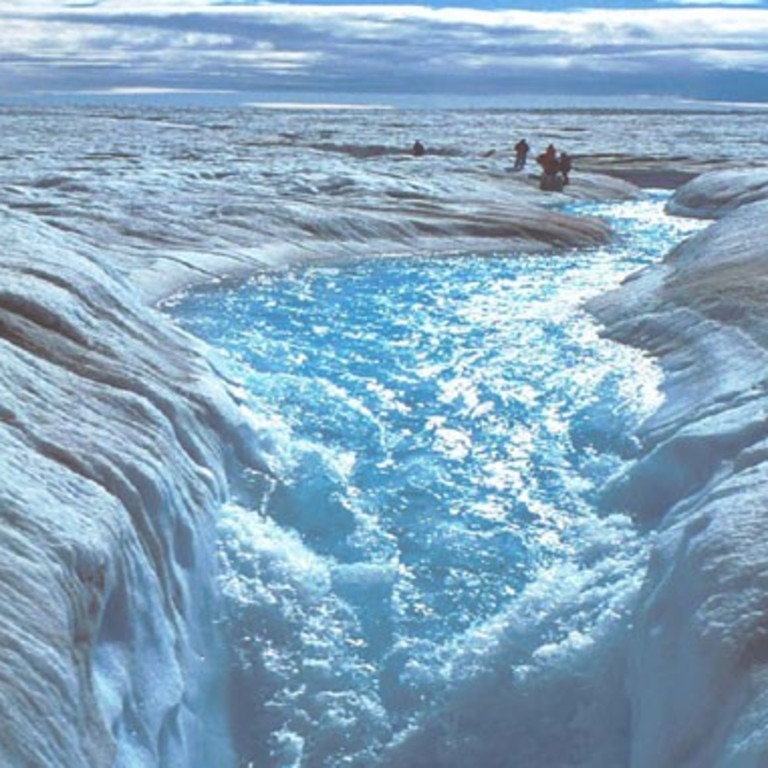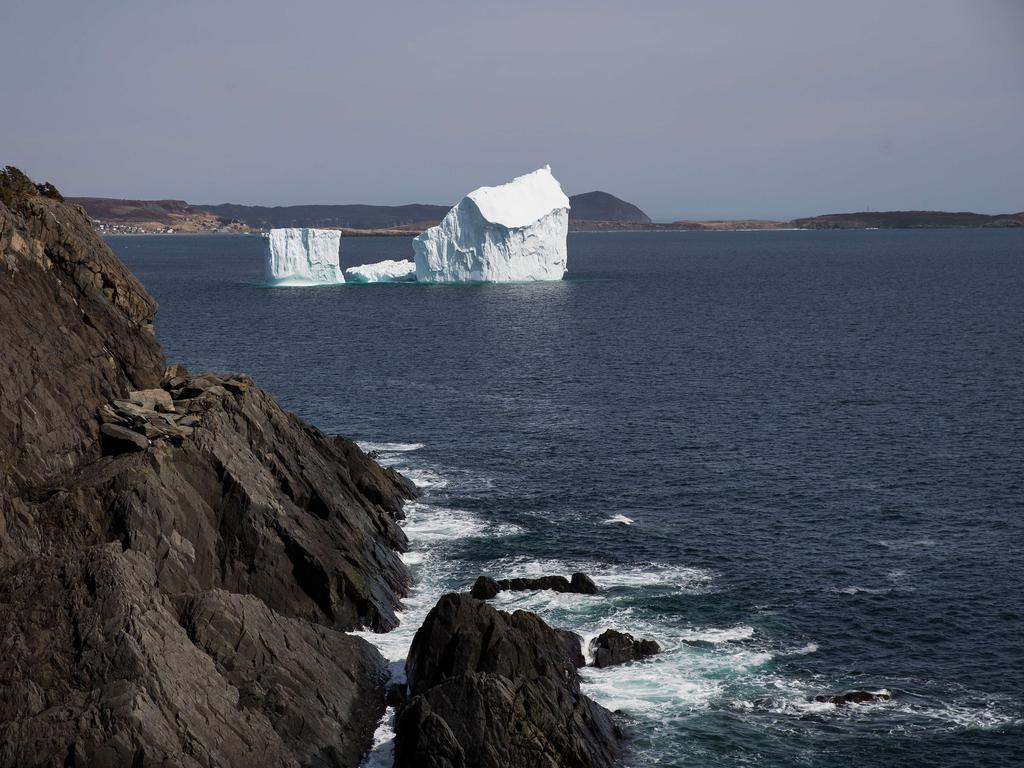Thicker ice in Greenland glaciers unable to sustain ice sheet edges
Glaciers getting less snow due to climate change will see ice at the edges of Greenland’s ice sheet not be replenished and melt, raising sea levels higher than previously thought, a new study suggests

READING LEVEL: RED
Greenland’s rapidly melting ice sheet will eventually raise global sea levels by at least 27cm – more than twice previous forecasts — according to a study published Monday.
The new estimate was based on something that could be called “zombie ice” – doomed-to-melt ice that, while still attached to thicker areas of ice, is no longer getting replenished* by parent glaciers* now receiving less snow due to climate change*.

Without replenishment, the ice is melting and will inevitably raise seas, said Geological* Survey of Denmark and Greenland glaciologist* and study co-author Dr William Colgan.
“It’s dead ice,” Dr Colgan said in an interview. “It’s just going to melt and disappear from the ice sheet.
“This ice has been consigned to the ocean, regardless of what climate (emissions*) scenario we take now.”
Fellow Greenland Survey glaciologist and study lead author Professor Jason Box said it was “more like one foot in the grave.”

The unavoidable centimetres estimated in the study are more than double the sea level rise scientists previously estimated from the melting of Greenland’s ice sheet. The study in the journal Nature Climate Change said it could reach as much as 78cm. By contrast, last year’s Intergovernmental Panel on Climate Change report projected a range of 6 to 13cm of likely sea level rise from Greenland ice melt by the year 2100.
What scientists did for this latest study was look at the ice in balance. In perfect equilibrium*, snowfall in the mountains in Greenland flows down and recharges and thickens the sides of glaciers, balancing out what’s melting on the edges. But in the last few decades there’s less replenishment and more melting, creating imbalance. Study authors looked at the ratio of what’s being added to what’s being lost and calculated that 3.3 per cent of Greenland’s total ice volume will melt no matter what happens with the world cutting carbon pollution, Dr Colgan said.

This much sea level rise “will have huge societal, economic and environmental impacts,” said Boise State University geosciences* Assistant Professor Ellyn Enderlin, who wasn’t part of the study.
“This is a really large loss and will have a detrimental* effect on coastlines around the world,” said NYU Professor David Holland, who had just returned from Greenland but was not part of the study.
This was the first time scientists calculated a minimum ice loss — and accompanying sea level rise — for Greenland, one of Earth’s two massive ice sheets that are slowly shrinking because of climate change from burning coal, oil and natural gas. Scientists used an accepted technique for calculating minimum committed ice loss, which is used on mountain glaciers for the entire giant frozen island.
Pennsylvania State University glaciologist Dr Richard Alley, who wasn’t part of the study, said the committed melting and sea level rise was like an ice cube put in a cup of hot tea in a warm room.

“You have committed mass loss from the ice,” Dr Alley said in an email. “In the same way, most of the world’s mountain glaciers and the edges of Greenland would continue losing mass if temperatures were stabilised at modern levels because they have been put into warmer air just as your ice cube was put in warmer tea.”
Time was the key unknown and a bit of a problem with the study, said two outside ice scientists, University of Kansas Professor Leigh Stearns and University of Buffalo glaciologist Dr Sophie Nowicki. The researchers in the study said they couldn’t estimate the timing of the committed melting, yet in the last sentence they estimate “within this century” without supporting evidence, Professor Stearns said.
Colgan responded that the team doesn’t know how long it will take for all the doomed ice to melt, but making an educated guess, it would probably be by the end of this century, or at least by 2150.
GLOSSARY
- replenished: restored, renewed, filled again or returned to its earlier condition
- glaciers: formed by fallen snow compressed into thick masses of ice over many centuries
- climate change: long-term shifts in temperatures and weather patterns
- geological: relating to geology, the science of Earth’s structure and substance
- glaciologist: scientist who studies glaciers and other natural ice phenomena
- emissions: the act of sending gas, heat, light and so on out into the air
- equilibrium: a state of balance, even weighting between opposing forces
- geosciences: Earth sciences such as geology, geophysics, and geochemistry
- detrimental: to negative effect, causing harm, damage or injury
EXTRA READING
Melting ice leaves sled dogs walking on water
Massive iceberg sparks tsunami fears
Scientists solve mystery of giant melting glacier
QUICK QUIZ
- Global sea levels will eventually rise by how many centimetres, according to the study?
- What is meant by the term “zombie ice”?
- Study authors calculated what percentage of Greenland’s total ice volume would melt?
- Greenland’s ice sheet is shrinking due to climate change caused by burning what three things?
- What remains a key unknown and was cited by other scientists as a problem with the study?
LISTEN TO THIS STORY
CLASSROOM ACTIVITIES
1. Finding key details
Find the key details in this news article by printing or copying and pasting it, and then highlighting:
In pink: the range of sea level rise estimated by the study published in Nature Climate Change and when they believe this will occur
In green: the range of sea level rise estimated by the Intergovernmental Panel on Climate Change report and when they believe this will occur
In yellow: details explaining the cause of the predicted sea level rise
In blue: the impact the predicted sea level rises will have
In orange: any other information that you believe are key details
Time: allow 20 minutes to complete this activity
Curriculum Links: English; Science
2. Extension
Use the details you have highlighted in the text to help you write a short summary explaining the main idea of this story.
Time: allow 15 minutes to complete this activity
Curriculum Links: English; Science
VCOP ACTIVITY
Renewable or just dead?
Zombie ice or dead ice in Greenland is doomed to melt and raise sea levels, causing massive environmental effects.
But what if there was a way to use the so-called dead ice instead?
If the ice is from snowfall, it should be freshwater, not salt … so can it not be collected and reused instead of wasted in the ocean?
Write a letter to Dr Colgan with some suggestions on ways that you think they should try to save and use the dead ice before it meets sea water.
Remember to use your VCOP skills to connect with Dr Colgan. Use persuasive language to convince him of your ideas.

